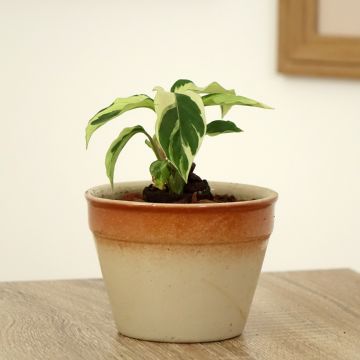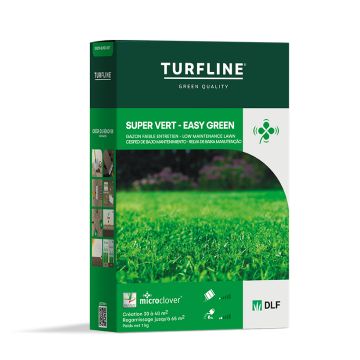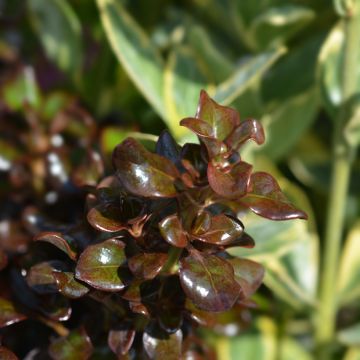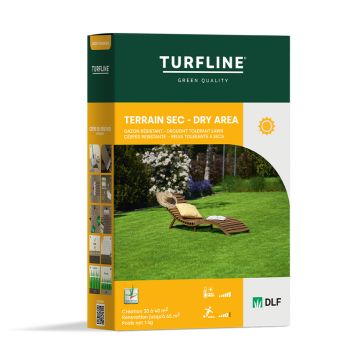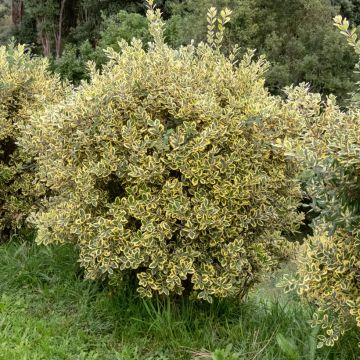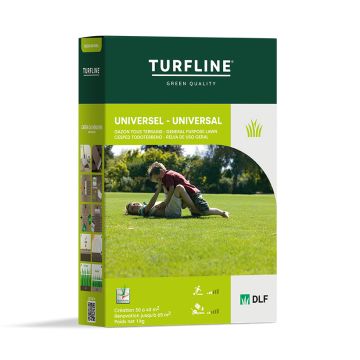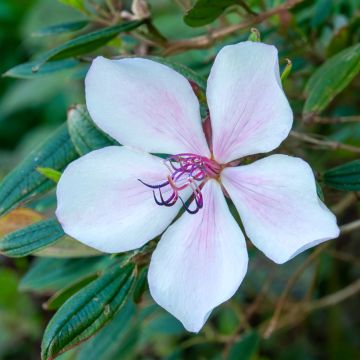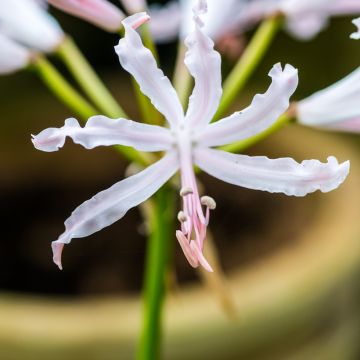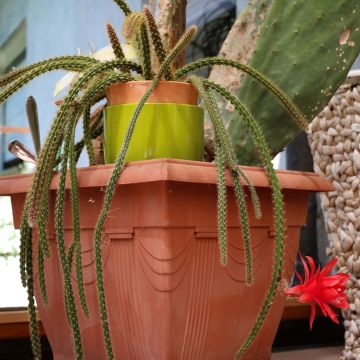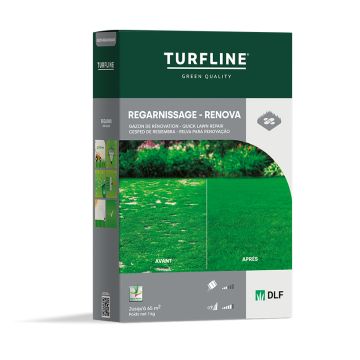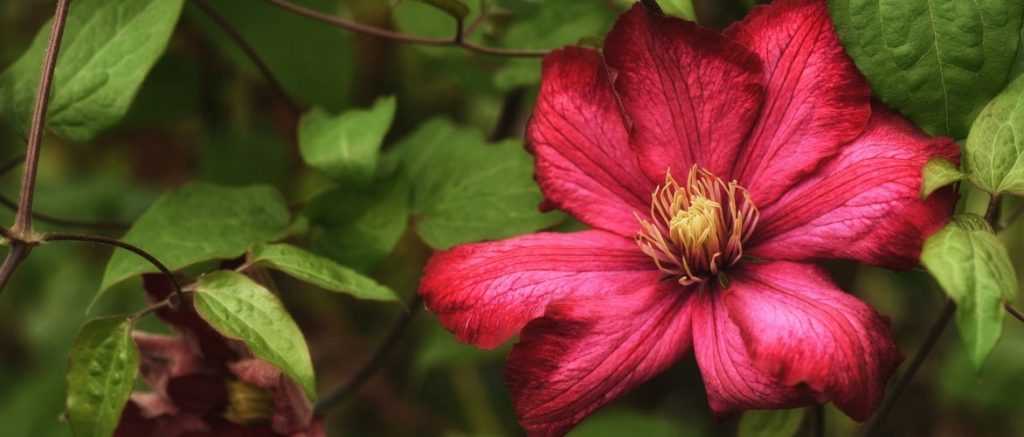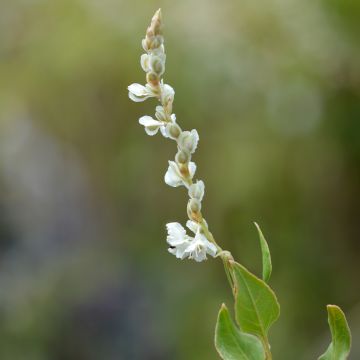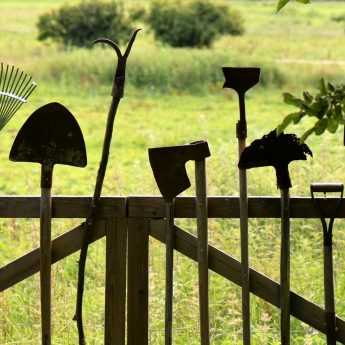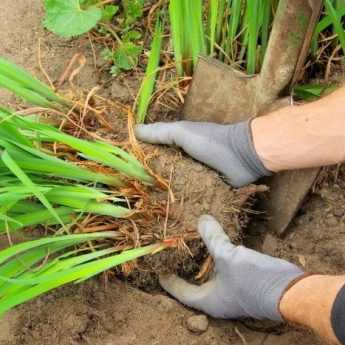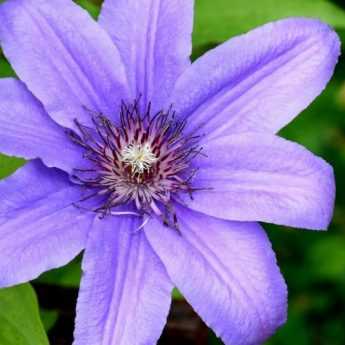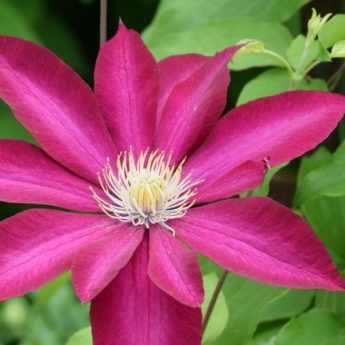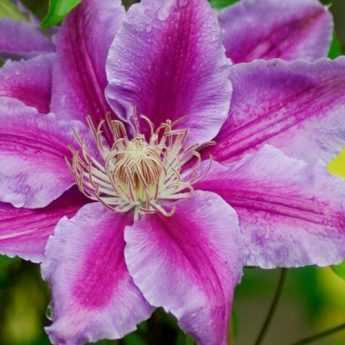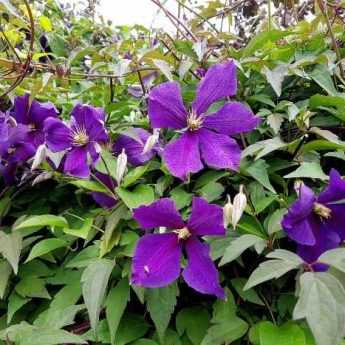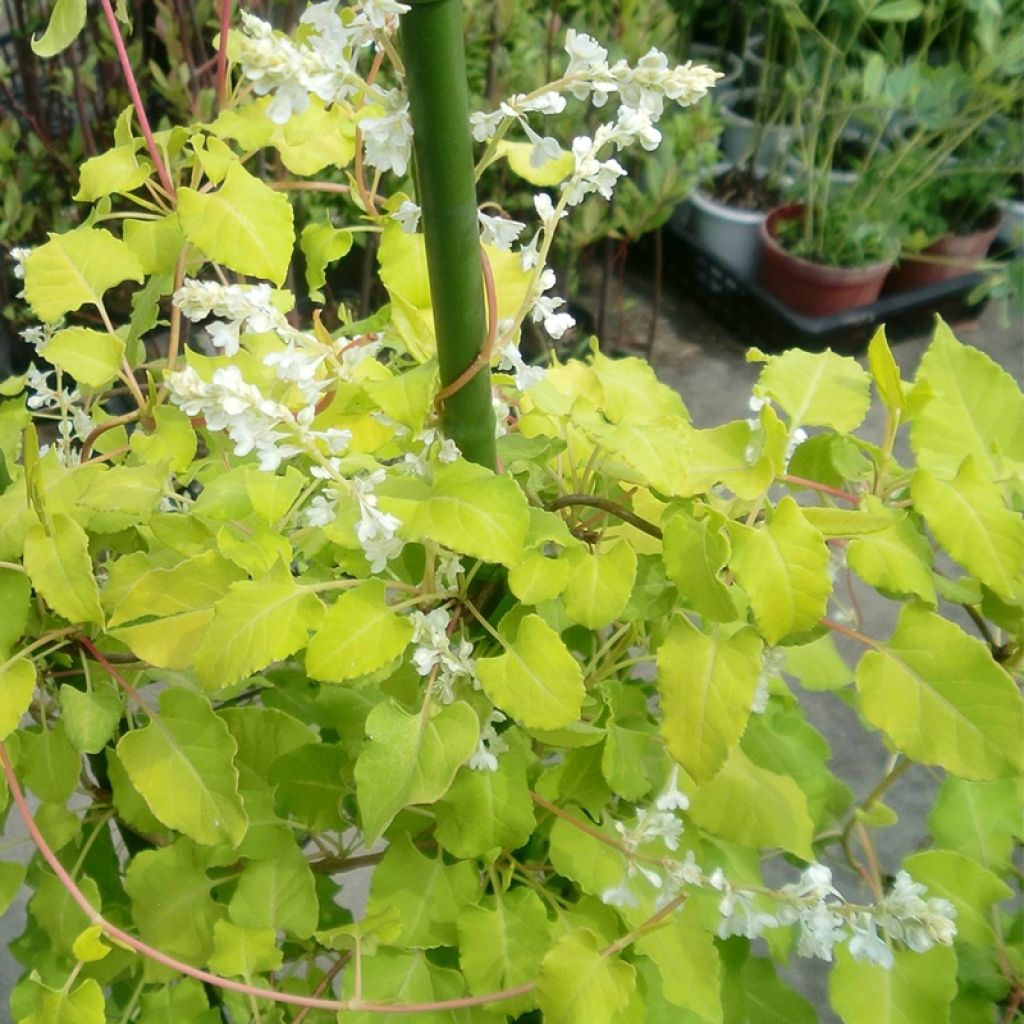

Fallopia aubertii Summer Sunshine
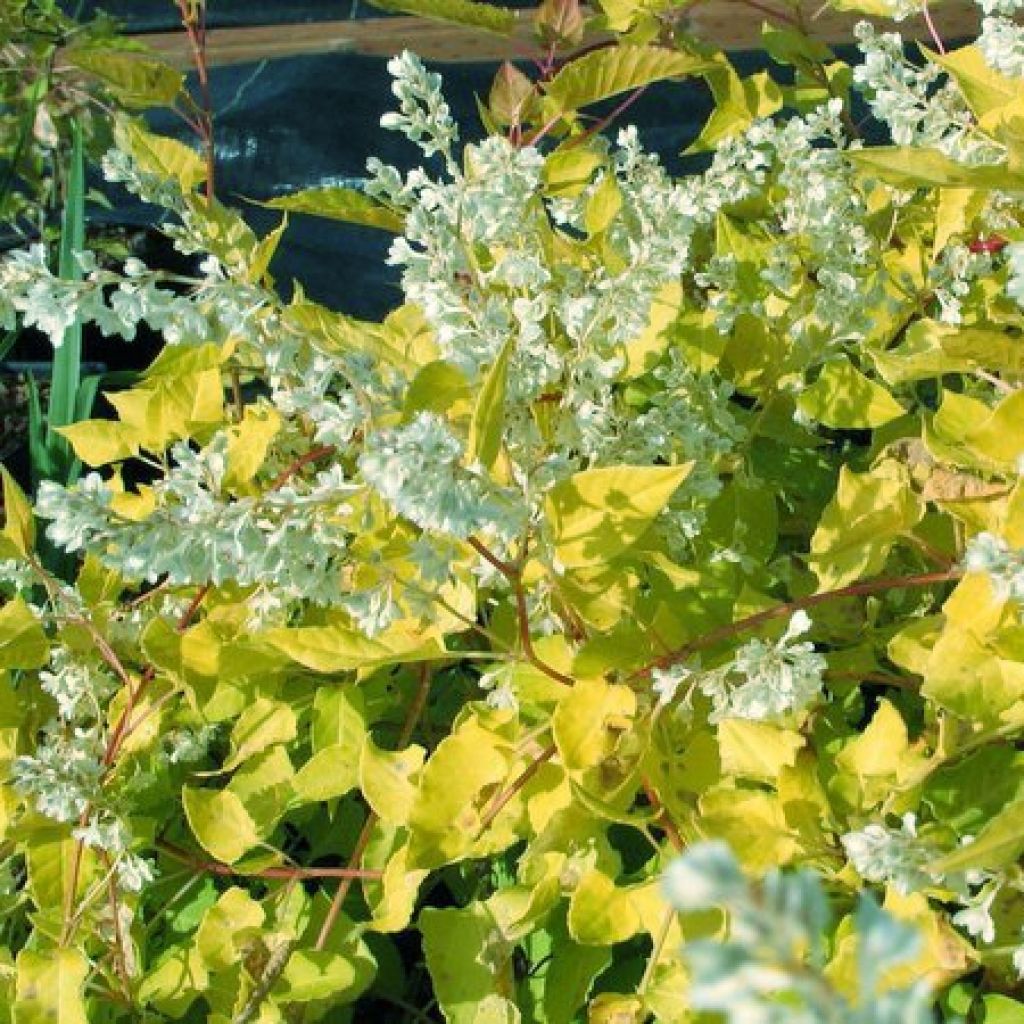

Fallopia aubertii Summer Sunshine
Fallopia aubertii Summer Sunshine
Polygonum aubertii Summer Sunshine Acofal
Silverlace Vine, Russian Vine, Mile-a-minute, China Fleece Vine
Why not try an alternative variety in stock?
View all →This plant carries a 6 months recovery warranty
More information
We guarantee the quality of our plants for a full growing cycle, and will replace at our expense any plant that fails to recover under normal climatic and planting conditions.
From €7.90 for pickup delivery and €6.90 for home delivery
Express home delivery from €8.90.
Does this plant fit my garden?
Set up your Plantfit profile →
Description
The Fallopia 'Summer Sunshine' is a particularly colourful climbing knotweed selection, interesting from spring to autumn. Its red spring shoots give way to yellow foliage, very bright, which serves as a backdrop for countless white and fluffy panicles in late summer. Even more decorative than the classic Fallopia aubertii, equally visited by bees, this variety is also slightly less vigorous, and therefore easier to control.
This 'Summer Sunshine' Knotweed belongs to the Polygonaceae family. It is a rhizomatous perennial with woody stumps that develops long voluble climbing or creeping stems, depending on the attachment points they encounter along their way. They can thus launch an assault on quite substantial supports and extend to lengths of 6 to 7 m (20 to 23ft). This can be an asset for covering unsightly scenery, but it is sometimes necessary to monitor its development at the risk of being overrun. Severe pruning will help to calm its vigour. It enjoys sunny exposures, but tolerates partial shade and is content with a fairly poor soil, but sufficiently deep and not too dry. It also tolerates limestone soils.
The young shoots of this climbing knotweed, 'Summer Sunshine', are red in colour, just like the petioles that bear the leaves. The leaves are arranged alternately, heart-shaped and measure from 5 to 10 cm (2 to 4in). Their colour is a golden yellow. In August-September, long floral spikes form. They easily reach 20 cm (8in) in length and are composed of multiple small immaculate flowers. They attract many pollinating insects and stand out distinctly from the yellow foliage in the background, forming a beautiful contrast. The foliage is deciduous and absent in winter.
The 'Summer Sunshine' climbing knotweed is perfect for a natural garden that wants to shelter abundant wildlife. It generously feeds insects and provides a refuge for birds thanks to its volume. It grows fairly quickly and withstands bad weather. It can therefore be used to create a solid and pleasantly colourful privacy screen, also offering a long flowering period extended by decorative fruits. To accompany it, consider, for example, a vigorous 'Spooneri' clematis montana, Double Delight or henryi clematis with white flowers. To complete this country scene, Foxgloves, grasses, and Centaureas will slip into the foreground to bloom in spring and early summer.
Plant habit
Flowering
Foliage
Botanical data
Polygonum
aubertii
Summer Sunshine Acofal
Polygonaceae
Silverlace Vine, Russian Vine, Mile-a-minute, China Fleece Vine
Cultivar or hybrid
Other Fallopia
View all →Planting and care
The 'Summer Sunshine' Climbing Knotweed is not demanding, it proves to be quite hardy and rather adaptable. It appreciates sunny exposures, but accepts partial shade and is satisfied with a sufficiently deep soil, not too compact nor too arid. It also tolerates chalky and fairly dry soils in summer. Dig a hole next to the support on which the climbing plant will cling. Loosen the soil in the bottom of the hole. Remove the plant from its container and immerse the root ball in water to rehydrate it, until it no longer produces bubbles. If the roots form a tangle, gently untangle them to facilitate rooting. If this voluble perennial tends to spread more than necessary, do not hesitate to severely prune some of its stems.
Planting period
Intended location
Care
Planting & care advice
This item has not been reviewed yet - be the first to leave a review about it.
Clematis
Haven't found what you were looking for?
Hardiness is the lowest winter temperature a plant can endure without suffering serious damage or even dying. However, hardiness is affected by location (a sheltered area, such as a patio), protection (winter cover) and soil type (hardiness is improved by well-drained soil).

Photo Sharing Terms & Conditions
In order to encourage gardeners to interact and share their experiences, Promesse de fleurs offers various media enabling content to be uploaded onto its Site - in particular via the ‘Photo sharing’ module.
The User agrees to refrain from:
- Posting any content that is illegal, prejudicial, insulting, racist, inciteful to hatred, revisionist, contrary to public decency, that infringes on privacy or on the privacy rights of third parties, in particular the publicity rights of persons and goods, intellectual property rights, or the right to privacy.
- Submitting content on behalf of a third party;
- Impersonate the identity of a third party and/or publish any personal information about a third party;
In general, the User undertakes to refrain from any unethical behaviour.
All Content (in particular text, comments, files, images, photos, videos, creative works, etc.), which may be subject to property or intellectual property rights, image or other private rights, shall remain the property of the User, subject to the limited rights granted by the terms of the licence granted by Promesse de fleurs as stated below. Users are at liberty to publish or not to publish such Content on the Site, notably via the ‘Photo Sharing’ facility, and accept that this Content shall be made public and freely accessible, notably on the Internet.
Users further acknowledge, undertake to have ,and guarantee that they hold all necessary rights and permissions to publish such material on the Site, in particular with regard to the legislation in force pertaining to any privacy, property, intellectual property, image, or contractual rights, or rights of any other nature. By publishing such Content on the Site, Users acknowledge accepting full liability as publishers of the Content within the meaning of the law, and grant Promesse de fleurs, free of charge, an inclusive, worldwide licence for the said Content for the entire duration of its publication, including all reproduction, representation, up/downloading, displaying, performing, transmission, and storage rights.
Users also grant permission for their name to be linked to the Content and accept that this link may not always be made available.
By engaging in posting material, Users consent to their Content becoming automatically accessible on the Internet, in particular on other sites and/or blogs and/or web pages of the Promesse de fleurs site, including in particular social pages and the Promesse de fleurs catalogue.
Users may secure the removal of entrusted content free of charge by issuing a simple request via our contact form.

































